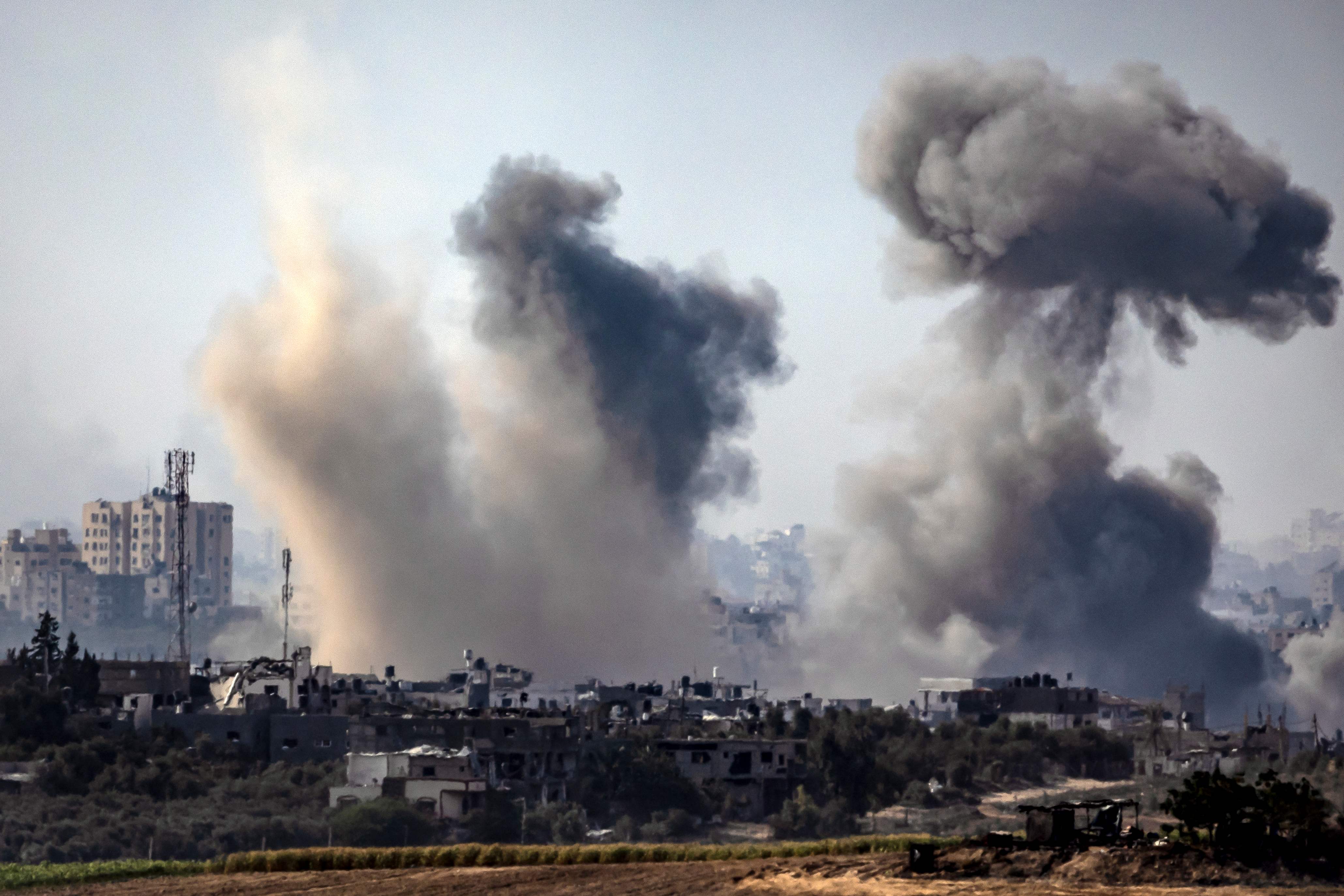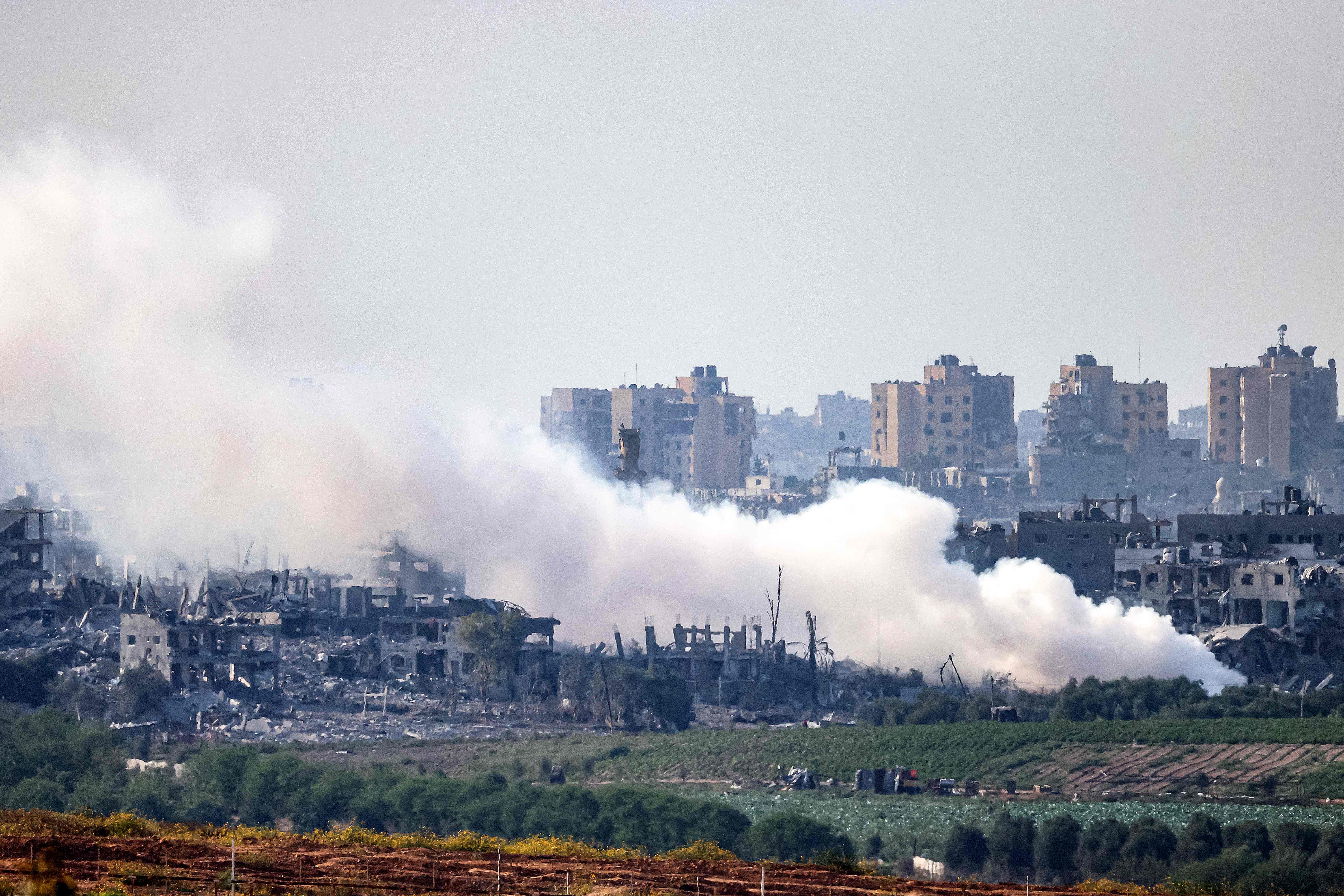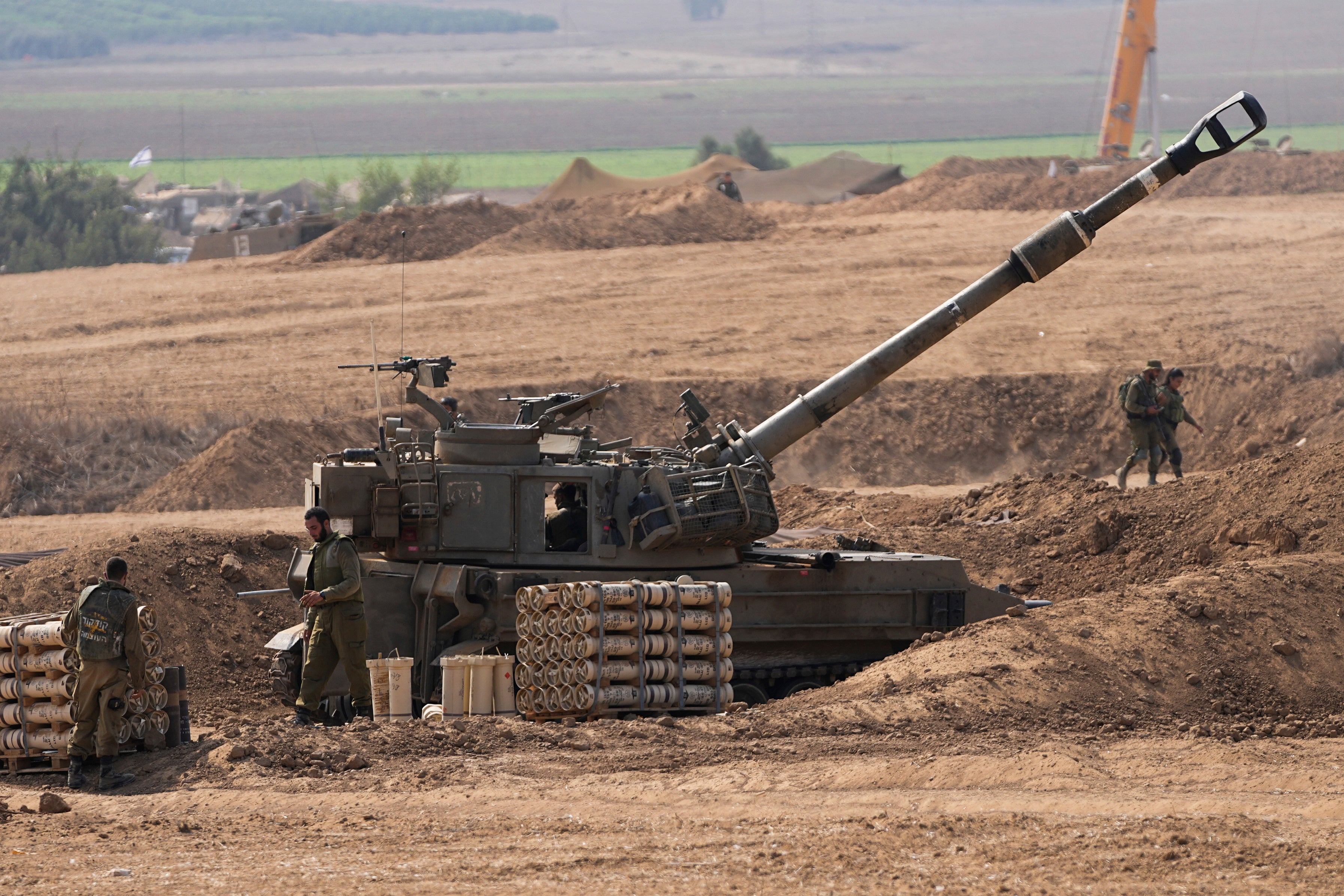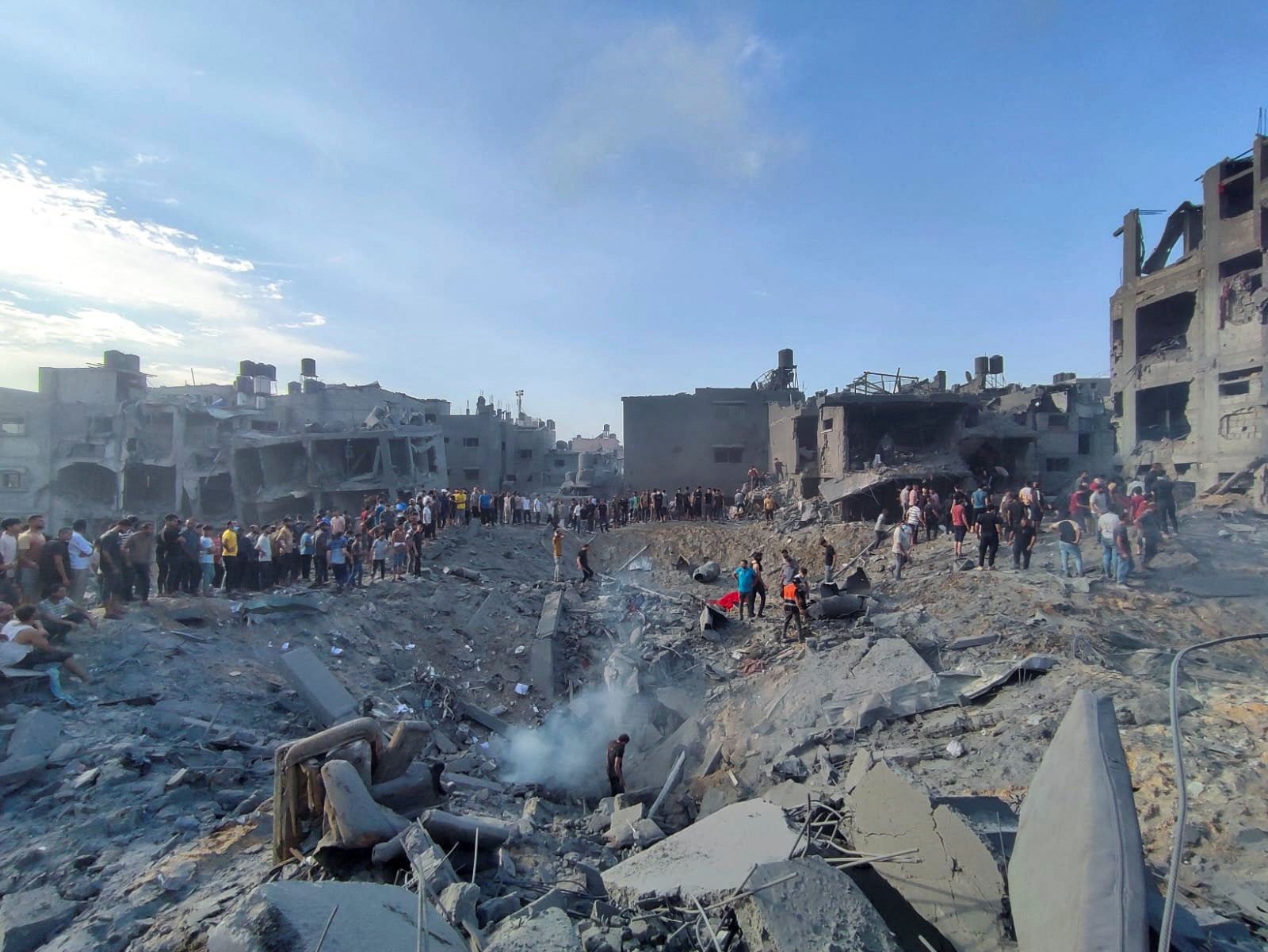More than 20,000 Israeli troops engaged in fierce fighting with Hamas ‘deep inside’ Gaza
Clashes intensify as Israeli Defence Forces attempt to isolate the strip

Your support helps us to tell the story
From reproductive rights to climate change to Big Tech, The Independent is on the ground when the story is developing. Whether it's investigating the financials of Elon Musk's pro-Trump PAC or producing our latest documentary, 'The A Word', which shines a light on the American women fighting for reproductive rights, we know how important it is to parse out the facts from the messaging.
At such a critical moment in US history, we need reporters on the ground. Your donation allows us to keep sending journalists to speak to both sides of the story.
The Independent is trusted by Americans across the entire political spectrum. And unlike many other quality news outlets, we choose not to lock Americans out of our reporting and analysis with paywalls. We believe quality journalism should be available to everyone, paid for by those who can afford it.
Your support makes all the difference.Israeli forces have begun operations targeting Hamas’s vast tunnel system, which is set to become a deadly environment for intense fighting in the battle for the control of Gaza.
The probing attacks in the northwest of the territory are designed to test Hamas’s defences in the subterranean passages, which run for hundreds of miles, and to gather information for the combat to come as Israel’s ground invasion continues to gather momentum.
Clashes have intensified in scope and scale as the Israeli Defence Forces (IDF) seek to isolate and surround Gaza City where the bulk of Hamas’s fighters, leadership and arsenal are based, with both sides claiming to have inflicted damage on the other.
More than 20,000 IDF forces are now in Gaza, according to Israeli military sources. The Israeli military claims it has eliminated “dozens of terrorists” in northwest Gaza, destroyed a Hamas base, missile launch and observation posts, and seized caches of guns and bombs.
A huge crater was seen in the Jabaliya refugee camp on Gaza City’s outskirts, which destroyed a number of apartment blocks in a residential area. The Gaza health ministry claims at least 50 people have been killed and a further 150 injured.
The Israeli military said on Tuesday it carried out a wide-scale strike in Jabaliya on Hamas infrastructure “that had taken over civilian buildings” and that tunnels under the buildings collapsed. It said the strikes killed a large number of Hamas militants, including Ibrahim Biari, who it said oversaw operations in the northern part of the strip.

Hamas says it has killed an Israeli soldier and destroyed armoured vehicles in northwest Gaza, disabled a tank near Zeitoun with an anti-tank rocket, and injured soldiers and damaged a bulldozer in Beit Hanoun.
Islamic Brigade, another militant group in Gaza, said it had hit Erez and Al-Atatra in northwest Gaza with missile strikes.
Images have been released by the Israeli government of Merkeva tanks moving through shattered streets, with accompanying infantry. Caterpillar D9 armoured bulldozers can be seen knocking down obstacles on the way.
But Israeli commanders appear to be cautious about deploying forces forward too fast against a well-armed enemy who are believed to have been planning for war for more than 18 months.
“There is no need to rush in, it’s inch by inch, metre by metre, trying to avoid casualties and trying to kill as much as possible Hamas terrorists,” said Amos Yadlin, former chief of Israel’s defence intelligence.
“It’s a very slow movement to make sure we clear all the tunnels and protect our forces. Moving fast is not a good idea here.”
As well as the risks of suffering high military casualties, there is deep concern about hostages, which has risen to 240 in a revised estimate, most of whom are believed to be held in the tunnels and will effectively become human shields.
Families of the hostages have been carrying out a ceaseless campaign to get back their loved ones. They have met the prime minister Benjamin Netanyahu, and the defence minister Yoav Gallant, and pressed for an exchange between the hostages and Palestinian prisoners – estimated to be more than 10,000 now after sweeping arrests in the West Bank – in Israeli prisons.
Both Mr Netanyahu and Mr Gallant have held that one of the prime aims of the military offensive was to get the captives back.
One of the captives, Ori Megidish, a 19-year-old female soldier, was freed by Israeli forces on Monday night. But defence sources warn against raising expectations that a large number can be found and rescued, with intelligence suggesting that the hostages are being moved around.
There is anger among some of the families after reports that the Qatari government, which has influence over Hamas, and had arranged the release of four hostages, was in the process of getting another 50 freed when the invasion began.
Senior Israeli officials privately acknowledge a degree of deception had taken place. Medical teams were told last Friday to prepare to activate contingency plans to receive dozens of hostages, but it turned out to be the last stages of planning for a ground attack.
The overall Israeli plan on the ground appears to be to surround and cut-off Gaza City where Hamas’s command and control, and senior echelon, are based. Images show Israeli tanks near Beit Lahoun to the northeast of Gaza City.

Footage on social media at the weekend showing Israeli soldiers raising an Israeli flag on top of a beachside hotel which was described by some as being inside Gaza City. It was, in fact, two miles to the north.
Satellite images showed a group of Israeli tanks near the city of Beit Hanoun, about four miles northeast of Gaza City. Other images showed more armoured Israeli vehicles clustered roughly two miles north of Gaza City.
To the south, Israeli forces have been seen on the main highway to the south, firing at a civilian car. The attack took place in an area where the Israeli military have told civilians to move from their homes in the north and Gaza City.

When the entry into Gaza City takes place, Israeli troops will face the daunting task of fighting in the tunnels.
Ben Milch, an Israeli army commander with the Combat Engineering Corps in the 2014 Gaza War, said the tunnel network was now substantially greater: “Where we only had to take out tens of tunnels, the challenge now is going to be hundreds of tunnels and kilometres upon kilometres; a real underground fortress that Hamas has built.
“That’s why the IDF is taking a methodical, slower approach to make sure that they are covering all their bases and making sure that they eliminate the tunnels as they go, so they’re not going to be ambushed from behind, from the side and so on. This is vital work which needs to be done.”



Join our commenting forum
Join thought-provoking conversations, follow other Independent readers and see their replies
Comments